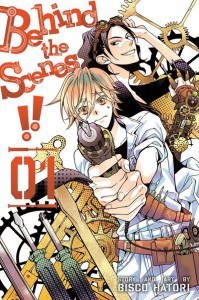S.Q. Eries's Blog, page 39
June 21, 2016
Manga Review: The Gods Lie
 Most manga I read are series titles, but I recently had a chance to review The Gods Lie, a single volume work released by Vertical Comics. It’s a contemporary tale of first love amidst tragic circumstances, and you can read on for the review.
Most manga I read are series titles, but I recently had a chance to review The Gods Lie, a single volume work released by Vertical Comics. It’s a contemporary tale of first love amidst tragic circumstances, and you can read on for the review.
Back Cover Blurb
Natsuru Nanao, a 6th grader who lives alone with his mother, strikes up an unlikely friendship with the reserved and driven Rio Suzumura. Natsuru plays hookey from soccer camp that summer, and instead of telling the truth to his mother, he spends all his time with Rio and her kid brother at their rickety house, where a dark secret threatens to upend their fragile happiness.
The Review
When I read the title of The Gods Lie, I thought the phrase had an accusatory tone. As it turns out, the nuance of the words is actually more sympathetic. Our main character is Natsuru Narao who’s recently moved out of Tokyo. For the most part, he’s a typical sixth grader: loves playing on the soccer team, gets along with other boys, and doesn’t understand girls. However, he has his sore spots, and when a new coach openly pities the fact that he’s small and doesn’t have a dad, he ditches soccer camp. Not wanting to explain things to his mom, he instead hides out at the rickety home of his reserved classmate Rio Suzumura and her kid brother Yuuta, where he discovers she’s hiding a much more serious secret of her own.
The manga doesn’t include an age rating, but even though the protagonist is eleven, I would put The Gods Lie in the “13 and Up” category. In addition to themes of child neglect, there are disturbing images when Natsuru stumbles upon the secret in Rio’s garden. And even though both kids are in elementary school, they bear the weight of adult responsibilities.
Rio is a standard character for her situation. The oldest child of a deadbeat dad, she struggles to make ends meet, keep up appearances, and care for her younger brother, even as she clings to her father’s promise that he’ll return home. As for Natsuru, he’s the only son of a widow, and while having a single mom isn’t that unusual, they don’t have a typical parent-child relationship. When Natsuru’s mom is first introduced, I wasn’t sure who she was because he calls her by her first name and treats her like an older sister. He also grabs her breasts, which seems a bizarre habit. Boob-groping aside, he’s a likable kid, and his personal experience with disappointment and tragedy allow him to empathize with Rio more than others would.
Mingled in the midst of secrets and messy circumstances is also a story of first love. With Natsuru staying with Rio and helping to watch Yuuta, it starts off as a very realistic game of playing house. The interesting thing is that the more Rio falls for Natsuru, the more childlike she becomes. In essence, he allows her to put down the role of adult and be the twelve-year-old she really is. As for Natsuru, he wants desperately to save Rio, but because he’s also only a kid himself, his efforts fall short. Even so, there’s beauty in the moments of escape he creates for her and Yuuta. Ozaki-sensei’s shojo-style illustrations are about average overall, but the character expressions convey an amazing depth of emotion.
In Summary
The Gods Lie is part issues story and part young romance. While the ultimate outcome to the situation at the Suzumura household is predictable, Natsuru’s struggle to change Rio’s reality tugs on the heartstrings. And although melancholy dominates the mood, the manga manages to end on a hopeful note.
First published at the Fandom Post.


June 14, 2016
Light Novel Review: Spice and Wolf Vol. #17 (FINAL)
 Spice and Wolf is a wildly popular light novel series that has spawned off an anime, an Internet radio show, and a manga series. While its European medieval setting is typical of high fantasy, this series has a unique bent. Rather than swordfights and magic, the plot focuses on economics, trade, and peddling in a way that skillfully blends adventure and romance.
Spice and Wolf is a wildly popular light novel series that has spawned off an anime, an Internet radio show, and a manga series. While its European medieval setting is typical of high fantasy, this series has a unique bent. Rather than swordfights and magic, the plot focuses on economics, trade, and peddling in a way that skillfully blends adventure and romance.
Yen Press has released the final volume of this novel series, and you can read on for the review. (You can also click here for my reviews of previous Spice and Wolf releases).
Back Cover Blurb
Several years have passed since the incidents surrounding the Coin of the Sun. Having received a letter from Holo, Norah the former shepherdess and Eve the merchant woman travel north–and on the way, they end up in the same wagon as Diana the alchemist! Were Lawrence and Holo able to find happiness for themselves? In addition to an epilogue covering the days immediately after the events of Volume 16, this final book in the Spice and Wolf series includes three new short stories!
The Review
I was somewhat surprised that the Coin of the Sun arc did not include an epilogue. Once Holo and Lawrence vow to live life together, the curtain closes without a hint of what that life looks like. As it turns out, this is because Hasekura-sensei needed more than a slim chapter to describe Holo and Lawrence’s post-journey life. Thus, we have Spice and Wolf Volume 17: Epilogue.
The series epilogue totals about one hundred pages split into two parts. The first, “Intermission,” is told from the perspective of Norah’s trusty dog Enek. Five years after Holo and Lawrence’s journey, Holo invites five of the women they encountered to the north for a celebration. Although Eve, Norah, Diana, Fran, and Elsa eventually wind up traveling in the same carriage, “Intermission” focuses predominantly on conversations between Norah, Eve, and Diana. The main topic of discussion is the couple that summoned them, and apparently, Holo’s not the only one to laugh at Lawrence’s expense. Female chatter aside, the chapter gives a detailed look at Norah’s life after the events of “The Shepherdess and The Black Knight.” Less information is provided on what happened to Eve following Kerube, but we still get a pretty good idea of her ever after.
The story then switches to Lawrence’s point of view for the second part, “Conclusion.” The events of the Coin of the Sun pretty much guaranteed him the means for his own business, and so we find him preparing for his grand opening. What is surprising is the location and type of business he’s going into. After all his talk of owning a shop, I’d thought he’d open a store in Lesko. Instead, he and Holo have settled in the hot springs town of Nyohhira to build an inn. As such, Lawrence continues to handle business matters but ones quite different from when he was a traveling merchant.
What hasn’t changed, however, is his inability to read Holo’s true intent. In fact, the women traveling to visit them seem to have a better grasp of what she’s plotting than Lawrence. Thus, we still have Laurence doing his utmost to please Holo but uncertain of what reaction he’ll get. One major shift, however, is that he now has the assurance that Holo will always be with him, which gives their relationship a sweet “married couple” feel despite the fact they are not officially wed. And even though “Conclusion” doesn’t include a wedding, the end is bound to delight Holo/Lawrence fans.
While the epilogue is too much to tack onto the end of a volume, it’s not quite enough to fill an entire book. As such, Hasekura-sensei wraps things up with three short stories. In ”Traveling Merchant and Gray Knight,” Holo remarks that Lawrence doesn’t speak much about his past, and that sets the stage for an anecdote about an eccentric, elderly knight Lawrence encountered well before Holo. “Gray Smiling Face and Wolf” tells of a profit-making scheme from Col’s perspective, and because Holo and Lawrence are more honest with the boy than they are with each other, it makes an interesting narrative. The final installment, “White Path and Wolf,” isn’t particularly exciting, but it does provide a quiet commentary on life and human existence, which makes a decent end to the closing volume of Spice and Wolf.
This light novel includes the first four pages of illustrations printed in color, world map, nine black-and-white illustrations, and afterward.
In Summary
If the romantic tension between Holo and Lawrence was what kept you reading Spice and Wolf, you’ll definitely want to pick up the last volume. It includes three side stories set during Holo and Lawrence’s travels together, but the main feature is Holo and Lawrence five years later. There is a business aspect to the epilogue, but by and large, it’s an illustration of what a happy ending between a merchant and wisewolf looks like.
First published at the Fandom Post.


June 7, 2016
Manga Review: Handa-Kun Vol. 2
 Fans of Satsuki Yoshino’s Barakamon can now get even more Handa-centric comedy. Yen Press has released Handa-Kun, a prequel series which chronicles the high school days of our favorite genius calligrapher. Read on for my review of Volume 2!
Fans of Satsuki Yoshino’s Barakamon can now get even more Handa-centric comedy. Yen Press has released Handa-Kun, a prequel series which chronicles the high school days of our favorite genius calligrapher. Read on for my review of Volume 2!
Back cover blurb
School life isn’t getting any easier for Seishuu Handa. Try as he might to make himself invisible to his classmates, the rising number of “Handaists” –classmates beguiled by his erratic behavior– make his task nearly impossible. With a new nemesis and girlfriend (??) in the mix, does Handa-kun have even a slim chance of staying off the radar?
The Review
The characters introduced thus far, both adults and students, have been weird in one way or the other. Now Yoshino-sensei changes things by bringing Yukio Kondou into the cast. He’s a normal high school student with average grades and interests. In short, he’s a garden variety mob character. But due to the luck of the draw, he gets grouped with Handa and Handa’s top three idolizers for a home economics assignment. Aizawa, Reo, and Tsutsui behave much as they did in Volume 1; Handa completely misinterprets their true intentions; and Kondou is the single normal POV, calling out the other boys’ craziness for what it is. By the way, their home economics assignment is a cooking project, and just as in Barakamon, cooking and Handa prove a disastrous combination.
Afterward, Kondou has no desire to associate with these freaks, but the three Handa idolizers somehow incorporate Kondou into their group. Handa henceforth has a foursome watching his every move: three spouting delusions while the fourth (Kondou) tries to inject reality into the commentary.
Yoshino-sensei then returns to introducing more characters with “HND Syndrome,” and Kei Hanada in Chapter 7 has it bad. Simply put, he’s very similar but not exactly the same as Handa, and the funniest and most extreme aspect of Hanada’s “similar but not exactly” is his face. The reaction Handa fans have when they discover he’s a fake fuels much comedy, and though the real Handa is largely absent from this arc, he does makes a final calligraphy jab at the fake that’s hilarious.
Then to wrap things up, Dash Higashino joins the story. Unlike most HND sufferers, his obsession with Handa began in middle school. While the cause of Dash’s jealousy is a bit of a stretch and his subsequent phobia of Handa is even more of a stretch, the illustrations of Dash trying to conquer his HND with the help of Hanada (the fake Handa) are quite funny.
Extras include bonus manga including glimpses of the Barakamon kids, translation notes, and an installment of “Handa-Kun News.”
In Summary
There’s one panel in this volume where a teacher yells, “Another second-year!? What is wrong with your grade!?” Indeed, everyone in Handa’s year are so out of touch with reality that when a normal person gets added to the cast, he’s the lone voice crying in the wilderness. For the most part Handa himself doesn’t do much to push the action forward; most chapters revolve around other characters’ impressions of him. As such, there’s no overarching plot or goal, but if you enjoy delusional characters, this volume should keep you entertained.
First published at The Fandom Post.


May 31, 2016
Manga Review: Oresama Teacher Vol. #20
 Mafuyu is a high school delinquent who wants to turn over a new leaf. So when she transfers schools, she thinks she’ll finally be able to live the life of a normal girl. There’s just one problem: her teacher Mr. Saeki is a bigger delinquent than she is!
Mafuyu is a high school delinquent who wants to turn over a new leaf. So when she transfers schools, she thinks she’ll finally be able to live the life of a normal girl. There’s just one problem: her teacher Mr. Saeki is a bigger delinquent than she is!
Oresama Teacher is a shojo manga that offers humor of the silly variety. Volume 20 has been released, and you can read on for the review. (For those who are interested, you can click here for my reviews of earlier volumes).
Back Cover Blurb
After the burden of his past sent Hayasaka fleeing into the stormy night, his dad is finally ready to reveal their family secrets. But is Hayasaka ready to remember why his memories started to disappear in the first place?!
The Review
The first half of Volume 20 is all about Hayasaka’s past. After the dramatic end to Volume 19, an explanation is necessary to reconcile Hayasaka’s memories with the situation at the Hayasaka mansion, and Hayasaka’s dad finally provides it. This mystery is something Tsubaki-sensei’s teased readers with for several volumes now, and whatever you might have guessed about the Hayasaka family, it’s probably wrong. To put it another way, the true nature of the Hayasaka relationships and the circumstances that got them there are too illogical to be reasoned out. At one point during the explanation, Hayasaka’s dad and mom are both labeled “delusional,” which pretty much sums up the environment that saddled Hayasaka with a girly name.
While these revelations are more weird than satisfying, the more important thing is that Hayasaka’s back with an intact set of memories. In fact, he remembers more than anyone might have guessed. However, the one who meddled with his memories remains to be dealt with, and Hayasaka is the one who proposes a plan to ensnare Momochi. It’s a risky ploy, and as it plays out, you’re never quite sure whether the Public Morals Club or Momochi has the upper hand. At the same time, Tsubaki-sensei does an excellent job of weaving humor into the tension.
Then the Hayasaka’s past/Momochi battle arc concludes, and Tsubaki-sensei turns the attention to the two PMC members that had largely been left out of the loop. First, we have an Okegawa-centric or, more accurately, a Strawberry Love-centric chapter. After Momochi’s nefarious scheming, Mafuyu’s and Okegawa’s girlish correspondence delivers on some much needed lighter bird-brained fun. Then we have an Akki-centric chapter, which, in addition to updating us on the state of his relationship with Komari, hints that the Momochi/ PMC battle might not be completely over.
The volume concludes with a Christmas chapter. As it turns out, Christmas Eve is Yui’s birthday, and Mafuyu insists on hosting the party. Between the mashup of celebrations and all the gang-related stuff Mafuyu forgets to hide from her friends, it’s a chaotically fun time that ends with a tantalizing hook.
By the way, if the notes at the end of the book are correct, the Student Council President’s arc will conclude in the next volume. Considering all the rounds that have taken place between the Student Council and PMC, it does seem about time for it to wrap up.
Extras in this volume include Characters and Story Thus Far, 4-panel comics, and a character relationship chart.
In Summary
Hayasaka’s past is revealed! His family background is nothing short of unbelievable, though not in a particularly good way. Fortunately, we have the PMC’s particular brand of friendship and loyalty to keep us entertained as well some additional Hayasaka memories that reveal the true nature of the enigmatic Runa Momochi.
First published at the Fandom Post.


May 24, 2016
Manga Review: Master Keaton Vol. #6
 I became an instant fan of Naoki Urasawa in 2004 when I saw the Monster anime. Psychological thrillers are definitely NOT my cup of tea, but he had me hooked with his combination of realistic artwork and gripping plot. As such, I was thrilled when Viz Media decided to release a translation of an earlier Urasawa action/adventure: Master Keaton. Read on for the review of Volume 6. (For my reviews of previous volumes, click here.)
I became an instant fan of Naoki Urasawa in 2004 when I saw the Monster anime. Psychological thrillers are definitely NOT my cup of tea, but he had me hooked with his combination of realistic artwork and gripping plot. As such, I was thrilled when Viz Media decided to release a translation of an earlier Urasawa action/adventure: Master Keaton. Read on for the review of Volume 6. (For my reviews of previous volumes, click here.)
Back cover blurb
Taichi Hiraga Keaton dreams of someday being the archaeologist who excavates the Danube Valley Civilization. Reality doesn’t seem to be working in his favor, however, as being an insurance investigator keeps him busy and always in peril! With no rest in sight, what’s in store for Master Keaton next?
The Review
After the lengthy Leopard’s Cage arc in Volume 5, Master Keaton returns to its usual pattern of short, stand-alone adventures. While one chapter (“The King’s Tears”) shows him pursuing artifacts during his free time, a paying job in archeology continues to elude him. As such, his role in Volume 6 is predominantly that of Lloyds insurance agent and investigator. Most of these cases have little to do with ancient history. Instead, Keaton’s investigations involve the current events of his era, such as ongoing tensions between Ireland and Britain, and two chapters (“The Winds of Cornwall” and “The Adventures of After-School Detectives”) are purely detective stories.
As usual, Keaton’s ex-wife doesn’t show up, but Keaton encounters various former classmates and colleagues as he travels Europe on his assignments. “The Code of Blood and Honor,” the longest arc in this volume, is a two-chapter mystery that involves the murder of an old schoolmate who just happens to be the son of a Mafia don. So in addition to having a “Godfather” flavor, the case has personal meaning to Keaton. To make it more personal, an assassin from one of Keaton’s earlier adventures returns, and he’s bent on revenge. In the “The Winds of Cornwall,” Keaton investigates the suspicious activity targeted toward a childhood friend, which a second mutual childhood friend is also investigating. Unlike the gripping plot in “The Code of Blood and Honor,” “The Winds of Cornwall” meanders all over the place, and even though it does involve deadly threats and organized crime, the story’s more about what Keaton’s friends think of him.
As for what strangers think of Keaton, most continue to view him as an eccentric or an annoyance. “The Adventures of After-School Detectives” is another murder mystery, but it’s also one of the funnier stories. Three school-age detectives are also on this case, and the way they pick at Keaton’s performance as an investigator is fairly amusing.
Keaton is in Europe the entirety of this volume; we only get one brief glimpse of his daughter and dad celebrating the holidays without him in Japan. However, both of them do travel to London to see him so we get our Yuriko- and old man Hiraga-centric chapters. In both these stories, the Hiragas render a service to strangers, and in Hiraga senior’s case, his primary motivation is his skirt-chasing tendencies, which we’ve heard plenty about but are kind of awkward to watch in action.
Extras include the first pages of Chapter 4 in color and a sound effects glossary.
In Summary
Keaton is all investigator in this volume. No teaching assignments or requests from the SAS. Just one Lloyds case after another with a couple personal adventures on the side. Not a lot of ancient history, but if you like tales of organized crime against a backdrop of Europe right after the fall of communism, this volume will deliver.
First published at the Fandom Post.


May 17, 2016
Manga Review: Sword Art Online: Mother’s Rosary Vol. 001
 Sword Art Online was undoubtedly one of the most popular anime of 2012. Based upon a series of light novels by Reki Kawahara, SAO’s near-future characters, gorgeous fantasy setting, and life-or-death stakes drew an enthusiastic fan following. Yen Press has released Volume 1 of the Sword Art Online: Mother’s Rosary manga adaption, and you can read on for the review. (For my reviews of other Sword Art Online manga, click here.)
Sword Art Online was undoubtedly one of the most popular anime of 2012. Based upon a series of light novels by Reki Kawahara, SAO’s near-future characters, gorgeous fantasy setting, and life-or-death stakes drew an enthusiastic fan following. Yen Press has released Volume 1 of the Sword Art Online: Mother’s Rosary manga adaption, and you can read on for the review. (For my reviews of other Sword Art Online manga, click here.)
Back Cover Blurb
Kirito and Sinon’s battle with Death Gun is over, but mere weeks later, something strange is afoot in the next-generation VRMMO ALfheim Online. A new duelist with a custom sword skill is defeating all comers–including Kirito! But when Asuna goes to face this duelist, she receives something she never expected: an invitation to an exclusive guild! But what is their aim? The Mother’s Rosario arc begins!
The Review
Mother’s Rosary, like Progressive, is an Asuna-centric series in the Sword Art Online franchise. This story, however, takes place well after Aincrad. In fact, it takes place after the events of GGO. As such, we see Asuna not as “The Flash” nor the damsel in distress at the top of the World Tree but as a teenage girl living life in the real world.
Unfortunately, despite all it took to get her out of SAO and then ALO, Asuna doesn’t return to a happily ever after. Certainly, she has Kirito’s devotion, but his love isn’t sufficient to erase her problems. Rather, another person’s lack of love threatens to negate the good in Asuna’s life.
Enter Asuna’s mom, otherwise known as the Queen of Tiger Moms. You’d think that she’d have sympathy for a daughter that got trapped in multiple life/death situations and narrowly avoided an arranged marriage to a creepy psychopath. But no. Rather, she acts as if the damage that their family’s company suffered on account of Sugou’s diabolical scheme (in Fairy Dance) is Asuna’s fault. While Mrs. Yuuki’s a bit extreme in her lack of empathy, her insistence on controlling every single aspect of Asuna’s life is bound to strike a chord with a lot of readers.
As such, New Aincrad, which is based off the virtual world that once held Asuna captive, becomes her place of escape. Even so, she can’t fully forget her problems, and the creators do a wonderful job at expressing her despair at the disparity between her real and online selves.
And that’s the situation when a mysterious new duelist arrives in New Aincrad. Enticing other players to fight with the prize of an eleven-hit original swordskill, Absolute Sword defeats all comers with ease. When even Kirito fails in his attempt, an intrigued Asuna decides to try the challenge herself.
Her reaction when she discovers Absolute Sword is a cute girl is a bit overdone; after all, Kirito passed for a “cute girl” in GGO. But then the narrative dives into the more important questions of why Absolute Sword is so strong and what she’s trying to accomplish. Absolute Sword quickly decides to include Asuna in her plans, and while those plans don’t require Asuna to put her life on the line, impossible is a pretty good descriptor for Absolute Sword’s goal.
By the way, the artwork is done by Tsubasa Haduki, who produced the Fairy Dance series. So if you liked Haduki-sensei’s fairy characters, you’ll see a lot more in Mother’s Rosary, although they’re now flying against an Aincrad backdrop.
Extras include embedded Background Guide notes, extra episode, afterward manga, and the title page and table of contents printed in color.
In Summary
The back cover touts SAO’s tagline: This might be a game, but it’s not something you play. However, this particular arc might be the closest to simply “playing” in the SAO franchise. There’s no “game of death,” no players forcibly trapped in a coma, no real world PK-ing. And that might just make this storyline the most relatable of the bunch. Asuna’s still showing some impressive swordplay, but as she embarks on a new ALO quest with new friends, her struggles are shaping up to be internal rather than external ones.
First published at the Fandom Post.


May 10, 2016
Manga Review: Spice and Wolf Vol. #12
 Spice and Wolf is a wildly popular light novel series that has spawned off an anime, an Internet radio show, and a manga series. While its European medieval setting is typical of high fantasy, this series has a unique bent to it. Rather than swordfights and magic, the plot focuses on economics, trade, and peddling in a way that skillfully blends adventure and romance.
Spice and Wolf is a wildly popular light novel series that has spawned off an anime, an Internet radio show, and a manga series. While its European medieval setting is typical of high fantasy, this series has a unique bent to it. Rather than swordfights and magic, the plot focuses on economics, trade, and peddling in a way that skillfully blends adventure and romance.
Yen Press has released the Volume 12 of the Spice and Wolf manga, and you can read on for the review. (For my reviews of previous Spice and Wolf releases, click here.)
Back cover blurb
Lawrence and Holo’s long journey to Yoitsu is finally approaching its conclusion. Having arrived in the town of Lenos, they encounter a jolly bookseller named Le Roi–but is he truly the fool he seems? They’re closer than ever to laying their hands on a forbidden tome whose contents threaten to transform Holo’s homelands, but in the world of merchants, sometimes the only one you can trust is yourself…
The Review
Volume 12 brings a number of past characters back to the story. Not only do we have both deaconess Elsa and her loyal friend Evan from the village of Tereo, but members of the Rowen Trade Guild’s Kerube Branch also show up. Even Eve figures into the plot, although she doesn’t actually show up in person. With Yoitsu in striking distance, it’s as if the creators want to remind readers of the varied encounters Lawrence and Holo have had in their journey.
The business aspect of this arc also combines several elements introduced in earlier chapters. At the heart of it is the forbidden book that threatens Holo’s homeland. As it turns out, the bookseller with access to the book is an acquaintance of Elsa’s, the funding comes through Lawrence’s Kerube guild associates, and the fallout from Lenos’ fur riots a few volumes back creates the particular conditions required for the deal to work. However, there is a new development in the mix: word of a mercenary band bearing the name of one of Holo’s packmates.
Whereas the ultimate solution to other Spice and Wolf schemes get laid out gradually, this one comes in a massive info dump. The logic is clear to be sure, but its presentation is abrupt. Instead, the creators spend more time dwelling on the emotional turmoil that leads Lawrence to concoct the scheme, which romantically minded readers might prefer anyway.
Lawrence’s attraction to Holo has always been kept in check by our wisewolf’s cutting remarks and his own pride. Now with their destination looming close, he must face the fact that he doesn’t want to part from Holo. Then the possibility of Holo reuniting with one of her old packmates adds jealousy to the equation. As usual, Lawrence suffers most of the angst while Holo plays it cool. Part of this is because Elsa, in a somewhat out-of-character moment, practically forces Lawrence to use her as a confessor. Even so, we get two instances where Holo shows her softhearted side, which should be plenty to keep the Holo/Lawrence fans happy.
Extras include the title page in color and closing remarks from the creators.
In Summary
For a transaction dilemma that takes an awful long time to set up, the resolution is rather quick. However, Lawrence/Holo fans might be more interested in the emotions stirred up by the deal, and Volume 12 delivers plenty of Lawrence’s internal angst. He might not be the devout sort, but he spills it all in an unusually candid and heated confession to Deaconess Elsa.
First published at the Fandom Post.


May 3, 2016
Manga Review: Behind the Scenes Vol. #01
 There are a LOT of anime and manga centered around glamorous idols and movie/TV stars, but what about the humble folk that do the grungy, tedious work behind the camera? The unseen teams charged with creating film sets, costumes, and props are the subject of Bisco Hatori’s Behind the Scenes!! Viz Media has released Volume 1, and you can read on for the review.
There are a LOT of anime and manga centered around glamorous idols and movie/TV stars, but what about the humble folk that do the grungy, tedious work behind the camera? The unseen teams charged with creating film sets, costumes, and props are the subject of Bisco Hatori’s Behind the Scenes!! Viz Media has released Volume 1, and you can read on for the review.
Back cover blurb
It’s two months into Ranmaru’s college career, and if he’s learned one thing, it’s that he’s really uncomfortable around other people. But when he stumbles into a zombie mob attack, he’s totally forced out of his comfort zone! Of course it’s just a movie shoot, but when he wakes up from his ignoble faint, he’s been whisked away behind the scenes with the Art Squad! Could this group of weirdos be what Ranmaru’s been looking for all his life?
The Review
Hatori-sensei is best known for Ouran High School Host Club, and her latest English-language release is another club manga. However, Behind The Scenes!! is not a story of handsome bucks in the spotlight. Rather, it is about the unseen and often unappreciated individuals that work off camera in the world of film.
Our main character is Ranmaru Kurisu, a first year humanities and sciences major at Shichikoku University in Tokyo. A wimpy fisherman’s son from the boonies, Ranmaru grew up being picked on, never participated in school clubs, and has a massive scapegoat complex. (His eternal catch phrase is “I’m sorry.”) He’s the type of character that gets annoying really fast. Fortunately, within two pages, he literally runs into the Art Squad when he ruins a student film shoot. As payback, Goda, the Art Squad president, forces Ranmaru to help with another prop project and discovers that Ranmaru’s actually quite talented. In fact, all the mishaps in Ranmaru’s life came from others trying to take advantage of his skill at crafts.
Ultimately, this is the story of the village misfit finding a place where he belongs and evolving. Ranmaru needs a lot of help in that respect, and that’s where President Goda comes in. Whereas Ranmaru’s a limp noodle, Goda’s a blazing sword of a personality. He’s a perfectionist with no qualms about bullying others because he sets insane standards for himself. Most Goda/Ranmaru interactions consist of Goda belting orders and Ranmaru freaking out. Fortunately, we have the four other quirky members of the club to provide additional breadth of emotions.
Because they are university students, their schedules are much less structured than a high school student’s. As such, Art Squad members spend seemingly all their time slaving on sets and costumes for the four university film clubs. And even though they’re only college students, the directors have big time egos. Film is a collaborative endeavor, but you wouldn’t be able to tell from the clashes that arise between them and the Art Squad. As such, story arcs are structured that the film clubs play the part of antagonist, making one outrageous demand after another. However, Goda takes those demands as challenges, and as the club tackles them, Ranmaru learns what it’s like to be a part of a team while readers get a peek into the more practical aspects of filmmaking.
Extras include character profiles, embedded notes from the creator, glossary, and author bio.
In Summary
The Art Squad may play a critical role in their school’s films, but they’re hardly the glamorous type. They’re a high-energy misfit group, the perfect place for a spineless artsy-craftsy misfit from the sticks to brandish his skills. If you’re interested in fun comedy with quirky characters and a lot of snark and screaming with film and art jargon thrown in, give Behind the Scenes!! a try.
First published at The Fandom Post.


April 26, 2016
Manga Review: Sword Art Online: Progressive Vol. 004
 Sword Art Online was undoubtedly one of the most popular anime of 2012. Based upon a series of light novels by Reki Kawahara, SAO’s near-future characters, gorgeous fantasy setting, and life-or-death stakes drew an enthusiastic fan following. Yen Press has released Volume 4 of the Sword Art Online: Progressive manga adaption, and you can read on for the review. (For my review of other Sword Art Online manga, click here.)
Sword Art Online was undoubtedly one of the most popular anime of 2012. Based upon a series of light novels by Reki Kawahara, SAO’s near-future characters, gorgeous fantasy setting, and life-or-death stakes drew an enthusiastic fan following. Yen Press has released Volume 4 of the Sword Art Online: Progressive manga adaption, and you can read on for the review. (For my review of other Sword Art Online manga, click here.)
Back Cover Blurb
While Nezha attempts to atone for his misdeeds, the battle against Sword Art Online’s second-floor boss begins! Kirito’s uneasy alliance with the other front-runners seems to be holding, but what will happen when the floor boss corners them? Can Nezha rise to the occasion and seize a hero’s prize?
The Review
Asuna has been the star of Progressive, but in Volume 004, she leaves the stage for nearly two chapters as the story shifts to the fighters on the front line. While Kirito plays a big part in this section, it’s as much about Agil, Lind, and Kibaou as it is about our black swordsman.This is still early in SAO so the players are still figuring one another out, and it’s amusing to watch egos clash as they collaborate toward the common goal of defeating the Second Floor Boss.
Fortunately, lessons were learned in the previous boss fight, and it’s a very interesting moment when Kibaou, of all people, suggests to the entire raid party that they hear what Kirito has to say about the beta test version. Kirito does have the ”beater” stigma hovering over him, but he’s not the ostracized lone-wolf he was in the anime. Instead, most players realize what he has to offer and would rather have those skills working alongside them. As such, Kirito’s pretty much part of the team as the raid party opens the Boss’ door.
Unlike the first boss fight, this is new material, and the battle completely sucked me in. I don’t often categorize battles as “epic,” but I wouldn’t hesitate to call this one as such. It’s got several unexpected twists along the way, including Asuna’s grand return to the front line. The panels sometimes get a bit squished because so much is happening, but the illustrations do an excellent job of conveying action and emotion. And although heroics and desperation dominate in heat of battle, the creators manage to fit in appropriately funny bits and a romantic moment as well. While I could personally do without the gratuitous Asuna panty shots, this boss fight and its aftermath made me want to stand up and cheer.
Extras include the title page and table of contents in color and bonus illustration.
In Summary
I am truly impressed with how the creators wrap up the Level 2 arc in this volume. Great action, solid plot, excellent character development, and several surprises to keep things exciting. If the rest of the floors in SAO: Progressive are like this, then I’m in for the whole journey.
First published at the Fandom Post.


April 19, 2016
Manga Review: My Love Story!! Vol. 8
 Takeo Goda, the male lead for Viz Media’s My Love Story!! is quite unusual. Bishonen tend to dominate the cast of shojo manga, but Takeo’s looks are about as far from a stereotypical pretty boy as you can get. Still, he possesses tremendous appeal in this hilarious romantic comedy. Volume 8 has been released, and you can read on for the review. (For my review of other volumes, click here.)
Takeo Goda, the male lead for Viz Media’s My Love Story!! is quite unusual. Bishonen tend to dominate the cast of shojo manga, but Takeo’s looks are about as far from a stereotypical pretty boy as you can get. Still, he possesses tremendous appeal in this hilarious romantic comedy. Volume 8 has been released, and you can read on for the review. (For my review of other volumes, click here.)
Back cover blurb
Yamato invites Takeo to a date at her house, but what’s in store when Takeo meets Yamato’s family for the first time? Furthermore, Takeo now has a rival in love! What will the gentle giant do about his incredibly handsome foe?
The Review
Even if you’re a My Love Story!! fan who prefers the anime over the manga, you should still consider getting Volume 8 because it contains two arcs that were not in the television series. The first arc introduces Yamato’s family, which didn’t appear at all in the anime. The awkwardness of Takeo’s initial encounter with Yamato’s dad is pretty funny, but the wittiness drops off after that. Unlike Takeo’s family, where everyone is extremely unique, Yamato’s family is so average as to be borderline boring, with the exception of Yamato’s crazy dog. As such, the comedy predominantly comes from physical humor (i.e., Takeo’s big body bumping into things) and the usual first meeting with girlfriend’s parents goof-ups. While it translates all right in manga format, I do wish the animators, who had done such a spectacular job adding impact to these kind of scenes, had included this arc in the anime.
Then the focus shifts from Takeo’s Love Story!! to Ai’s Love Story!! Again, I’m surprised to see Ai and the ever persistent Oda return for not one, but two chapters. While the previous Ai-Oda arc was about Oda meddling in Takeo and Yamato’s relationship, this time Oda’s out to win Ai on his own merit. Takeo, of course, is rooting for Oda, and Oda once again stays with the Godas as he makes a new bid for Ai’s affections. Although Ai is not a Goda, she has been Takeo’s big sister figure, and it’s fun to see the Goda family perspective on Ai’s suitor. The story concludes with a literal wild ride, and though it’s entertaining, action scenes are not Aruko-sensei’s strongest point. As with the meeting with Yamato’s family, it’s a sequence I would have loved to see animated.
The volume concludes with the start of summer vacation and a part time job for Yamato. One of the running themes is how women fall for Suna and how they don’t fall for Takeo. Even so, Takeo’s captured the hearts of three girls so far. On the other hand, Yamato, who is universally considered cute, hasn’t attracted anyone else’s attention. Well, that changes with Chapter 31. An actual rival for Yamato’s affections finally arrives in the form of a coworker. But this isn’t your usual high-school love triangle. In addition to being as different from Takeo as can be, Ichinose is a working adult. However, he’s pretty immature for an adult so it works out. At any rate, this kind of competition is bound to send Yamato and Takeo’s relationship into new territory.
Extras include story thus far and notes from the creators.
In Summary
As fun as it is, Takeo and Yamato’s relationship continues at a snail’s pace. After the sitcom that is Takeo’s first meeting with Yamato’s parents, the attention shifts to the as of yet unresolved Oda-Ai relationship for two chapters. Fortunately, the volume refocuses on our main couple with the introduction of a rival for Takeo, who is certain to bring new complications and romcom fun to Takeo’s Love Story!!
First published at The Fandom Post.





